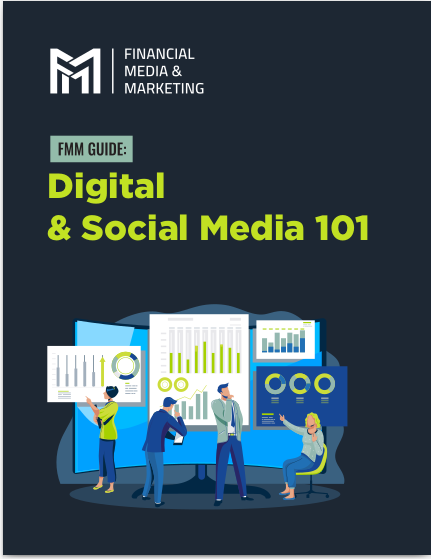Key Takeaways
-
A strong referral strategy can significantly increase your client base and revenue in 2025.
-
Building trust and maintaining relationships with current clients and industry professionals is key to getting high-quality referrals.
Why Referrals Matter More Than Ever in 2025
Competition in the insurance industry has never been fiercer. With digital marketing channels more saturated than ever, the most effective way to get quality leads is through referrals. Potential clients trust recommendations from people they know far more than any advertisement. That’s why having a solid referral strategy isn’t just a bonus—it’s a necessity.
Understanding the Power of a Strong Referral Network
You might already get a few referrals here and there, but are you actively working to maximize them? A well-developed referral strategy can turn your satisfied clients and professional connections into your most powerful marketing force. It’s not just about asking for a name—it’s about creating a system that continuously feeds high-quality leads into your pipeline.
The Trust Factor in Referrals
When someone refers a client to you, they’re putting their own credibility on the line. That’s why people are selective about whom they recommend. If you want consistent referrals, you must ensure that your services are reliable, transparent, and beneficial to your clients.
Why Clients Hesitate to Refer
Even satisfied clients may hesitate to refer others due to concerns about privacy, uncertainty about how the referral process works, or fear that the person they refer won’t be happy with the service. Addressing these concerns upfront and reassuring your clients can improve your referral rate significantly.
Step 1: Make Yourself Referable
Before you start asking for referrals, ask yourself—would you refer someone to a business that provides subpar service? Probably not. Here’s how to ensure you’re giving people a reason to recommend you:
Deliver Exceptional Service Every Time
Your existing clients are your best source of referrals. If they are delighted with your service, they will naturally want to tell others about you. This means going beyond just selling a policy—educate your clients, follow up with them regularly, and be available when they need help.
Build Long-Term Relationships
The longer you maintain a relationship with your clients, the more likely they are to refer others to you. Keep in touch with them through personalized emails, holiday greetings, and annual policy reviews to stay on their radar.
Offer Additional Value to Clients
Provide exclusive insights, newsletters, or complimentary policy reviews that give clients a reason to stay engaged with you. The more value you provide, the more likely they are to refer others.
Step 2: Develop a Referral System That Works
Having a structured approach to getting referrals ensures consistency. It’s not enough to simply ask whenever you remember—you need a repeatable system in place.
Set Up a Referral Calendar
Schedule referral outreach as a regular activity. Whether it’s monthly follow-ups, quarterly check-ins, or annual client appreciation events, having a schedule will help you stay consistent.
Offer Value in Exchange for Referrals
People are more likely to refer others if they see value in doing so. This doesn’t necessarily mean offering incentives or discounts. Instead, consider providing exclusive content, free consultations, or additional services to those who send referrals your way.
Create Referral Tiers
Consider implementing a tiered referral program where clients who refer multiple people get additional perks, such as a VIP status or special services. This can encourage ongoing referrals rather than one-time mentions.
Step 3: Leverage Existing Networks for High-Quality Referrals
Your current clients aren’t the only ones who can send referrals your way. Other professionals in your industry can be a goldmine for new business.
Build Partnerships with Other Professionals
Connect with financial advisors, real estate agents, tax professionals, and other service providers who interact with potential clients. A strong partnership allows you to exchange referrals with professionals who serve a similar audience.
Engage in Industry Events and Online Communities
Attending industry events and participating in online forums where potential clients and referral partners gather can position you as a go-to expert. The more visible and active you are, the more likely you are to receive referrals.
Join Local Business Networks
Organizations like your local Chamber of Commerce or professional networking groups can be excellent sources for referrals. These groups thrive on members helping one another, making them a prime place to build relationships.
Step 4: Make It Easy for People to Refer You
People are busy, and if referring you requires effort, they’re less likely to do it. Streamline the process to make it effortless.
Provide Simple Referral Tools
Offer easy-to-share referral links, short email templates, or even business cards that clients and partners can pass along. The less effort it takes, the more likely they are to follow through.
Use Social Media for Referrals
Encourage satisfied clients to leave reviews or share their positive experiences on social media. A simple recommendation on LinkedIn or Facebook can reach hundreds of potential clients.
Automate the Referral Process
Consider using automation tools to remind clients about referrals at key points in their customer journey, such as after a successful policy renewal or positive feedback survey.
Step 5: Follow Up and Show Appreciation
Getting a referral isn’t the end of the process—it’s just the beginning. How you handle referrals can determine whether you get more in the future.
Thank the Referrer Immediately
When someone refers a client to you, acknowledge it right away. A simple thank-you note, phone call, or email can strengthen your relationship and encourage them to refer again.
Keep the Referrer Updated
If appropriate, let the person who referred the client know how things are going. While respecting client confidentiality, keeping them in the loop shows appreciation and reinforces their decision to recommend you.
Reward Loyalty Over Time
Building a long-term referral system means recognizing your most valuable referrers. Send personalized gifts, handwritten notes, or special invitations to exclusive events to show your appreciation.
Why 2025 Is the Perfect Year to Refocus on Referrals
With increasing competition and the rising costs of traditional lead generation methods, referrals are one of the most cost-effective and reliable ways to grow your client base. A referral-based strategy allows you to tap into warm leads who already trust you, making conversions easier and more successful.
What’s Next? Time to Implement Your Referral Strategy
Now that you have a step-by-step guide to building a referral strategy, it’s time to put it into action. Start by reviewing your current client relationships, identifying potential referral sources, and setting up a system to track and encourage referrals. The sooner you start, the sooner you’ll see the results.










